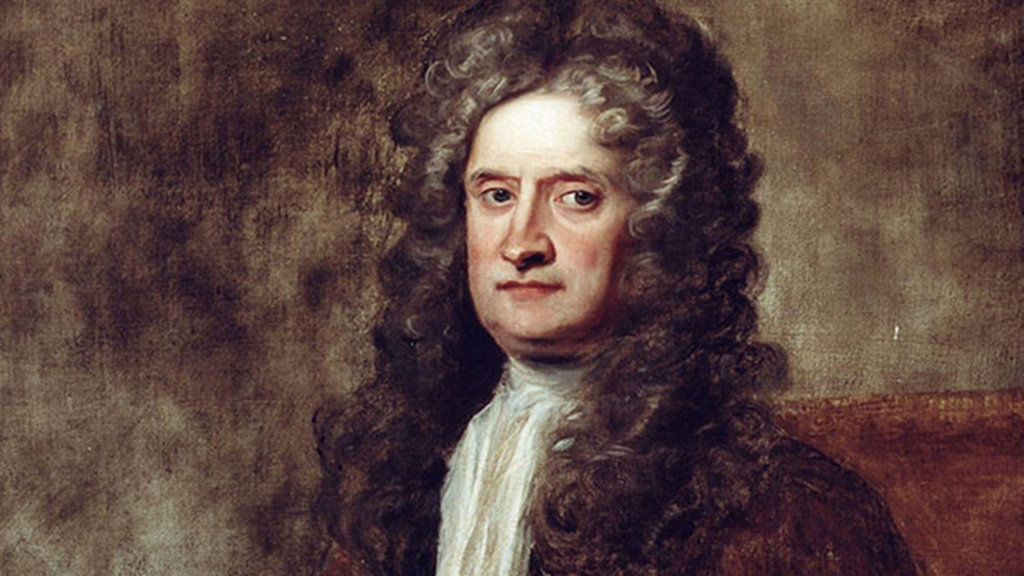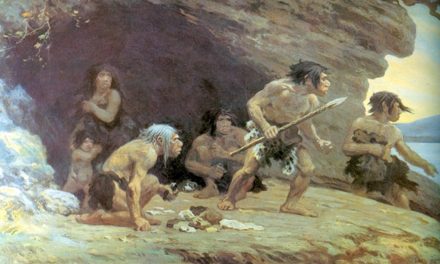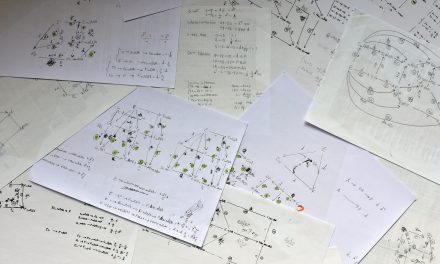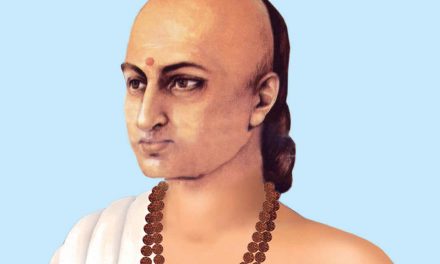This is the part 2 of the article “Science, Scientific Method & the Beauty of Science” Part 1 can be read from here
By 1640, Johannes Kepler had derived the mathematical foundation for describing planetary orbits around the Sun, and Galileo Galilei had presented equations that predicted the behavior of falling objects. Yet, at that time, the studies of terrestrial and celestial mechanics remained separate domains, presumably with quite different sets of natural laws. It remained for Isaac Newton (1642–1726) to synthesize the empirical descriptions of celestial and terrestrial motions into one set of laws that applies to motions everywhere in the universe.
Newton was arguably one of the smartest men ever lived, a genius among geniuses. He was a student of mathematics and natural philosophy at Cambridge University, from which he graduated with a Bachelor’s degree in 1665. In that same year, before he could return for further studies, the Great Plague struck England. With the University shut down, Newton spent 18 months at his family farm in intense personal study and thought. During that remarkable year and a half, he formulated many of his major contributions to science, including the branches of mathematics now known as integral and differential calculus, many of the laws of optics, the universal laws of motion, and the law of gravitation! Newton returned to Cambridge University in 1667, and remained at Trinity College for the rest of his life. In formulating his three laws of motion, Newton first divided all physical movement into one of two categories. Uniform motion is the movement displayed by objects traveling in one direction at a constant speed. Uniform motion includes the special case of an object at rest. One set of mathematical laws, formulated by Isaac Newton, can be used to predict the motion of objects anywhere in the universe.
Previous scholars had also considered the circular orbits of planets a kind of uniform motion. Newton classified orbital motions incorporating a change in direction, as well as any motion involving a change in speed, to fall in the second category of motion, known as acceleration. Acceleration includes both speeding up and slowing down. Acceleration also occurs any time direction is changed, whether or not the speed changes.
Newton’s first law of motion states: “Everybody continues in its state of rest, or of uniform motion in a [straight] line, unless it is compelled to change that state by forces impressed upon it.” Objects can display three distinctive types of behavior:
• An object can move at constant speed and direction, varying in neither speed nor direction. • An object can stand still. • An object can accelerate under the influence of a net force. The first law of motion provides an operational definition of “force” as the phenomenon that causes an object to accelerate. The idea that circular planetary orbits, as well as all other accelerations, are caused by an unbalanced force was radical in Newton’s day, for it demanded that forces act over the huge distances of space.
Newton’s second law of motion defines the exact mathematical relationship among three measurable physical quantities: force, mass, and acceleration.
“The acceleration produced on a body by a force is proportional to the magnitude of the force and inversely proportional to the mass of the object.”
Because mass is measured in kilograms (kg) and acceleration is measured in meters per second per second (m/s2), the unit of force is the kg-m/s2, now called the “Newton.” Mass in this equation represents an object’s tendency to resist acceleration, a property called its “inertia.” The more massive an object, the greater the force necessary to impose a given acceleration, and thus the greater its inertia. The third law of motion is the familiar but subtle statement: “For every action there is an equal and opposite reaction.” Forces always act simultaneously in precisely balanced pairs. If you apply a force in throwing a ball, the ball applies an equal and opposite force to your hand. Newton’s three laws of motion together provide a complete framework for investigating and understanding all of the forces and motions that occur in our lives.
Newton, himself, applied this framework to describe the ever-present force of gravity.
Universal Gravitation
Newton’s analysis of the force of gravity was rooted in his understanding of the relationship between motion and force. Isaac Newton’s three laws of motion define the concept of “force,” a phenomenon that causes a mass to accelerate. Newton’s laws establish the mathematical framework necessary for identifying and studying the behavior of any natural force. During 1665–1666, Newton’s remarkable year of discovery, he deduced a mathematical description of the most pervasive of these forces – the universal force of gravity. To Newton’s contemporaries, gravity was a terrestrial force, restricted to objects near the Earth’s surface. Newton’s great advance was to realize that one force, the universal force of Gravity acted on both an apple and the Moon.
The apple, attracted to the Earth by gravity, falls straight down. If the apple is thrown, it follows a parabolic path back to the surface, in accord with the observations of Galileo. If the apple is launched with sufficient acceleration, it will adopt an elliptical orbit, as observed by Kepler for the Moon and planets.
Newton’s investigations focused on finding a mathematical description of this force that would lead to the elliptical planetary orbits described by Kepler, as well as the law of falling bodies and the parabolic paths of cannonballs described by Galileo. Newton’s universal law of gravitation define the relationships among four measurable physical quantities: the mass of two objects, the distance between them, and the gravitational force thus generated:
F = G × [m1 × m2]/d2 where G is the gravitational constant. Between any two objects there exists an attractive force of gravity that is proportional to the product of their masses, divided by the distance between them squared. Gravity is an attractive force that exists between any two masses, anywhere in the universe.
Newton’s equation reveals that an equal gravitational force is experienced by any two objects: You and the Earth, for example, or the Earth and the Moon.
Newton’s equation for gravity has intuitive power. Gravity, in some deep and as yet mysterious way, is an attribute of mass. As the distance between two objects increases, the gravitational force between them drops off as one over the square of the distancean “inverse square” relationship that is common in many everyday situations. This behavior suggests that we can imagine a gravitational field of lines radiating out from every mass.
The numerical value of the gravitational constant, G, is the key to determining the Earth’s mass and, by extension, the mass of other heavenly objects. Henry Cavendish (1731–1810), a chemist and physicist at Oxford University, devised an ingenious torsion balance to measure G in 1798. He suspended a dumbbell with lead spheres from a wire such that the two suspended spheres were in proximity to two larger, boxed lead spheres. The slight force of gravity between the two pairs of spheres caused a measurable torsional force on the wire. In 1998, an international group of scientists met to observe the bicentennial of Cavendish’s discovery and to review new experiments devised to determine the value of G, now said to be 6.67259 x 10-11 N m2/kg2
Newton’s law of gravitation can be used to calculate many useful things. First, it is important to distinguish between weight and mass, two terms that are often interchanged. Weight is the gravitational force exerted by an object. Weight varies from place to place, depending on the strength of the gravitational field. Mass is the amount of stuff (measured in kilograms) of which an object is made; mass is invariant from place to place. Objects weigh less on the Moon because the mass and the radius for the Moon are different than for Earth.
Newton’s universal laws of motion and gravity revealed a deep, pervasive order to the natural world. One set of laws applies both at the Earth’s surface and in the heavens, and these laws provide a framework by which many other phenomena can be studied. Perhaps Newton’s greatest legacy is a view of the universe as a place of deep mathematical order, a clockwork universe, whose mechanisms can be deduced through observation and analysis. This optimistic view was adopted in other human pursuits, including economics and politics during the Enlightenment a century later. Some followers of Newton, notably the French mathematician Pierre Simon Laplace (1749– 1827), even speculated that, since the laws of motion are exact and each particle in the universe has a measurable position and velocity, the future is preordained. Some scholars even called into question the nature of free will. As we will discuss later, this predictable universe of Newtonian mechanics would be challenged by an even deeper understanding of science in later centuries. However, the legacy and influence of Newton remains large to this day, as the first man to mathematically prove the deeply logical and universal nature of reality, a reality that human mind could understand. No longer was needed a divine force to explain the universe, as Laplace famously answered Napoleon when asked about God “I don’t need that hypothesis”. The epitaph on Newton’s tombstone written by poet Alexander Pope sums it well on the influence of Newton on human’s understanding of nature: “Nature and Nature’s laws lay hid in night: God said, Let Newton be! and all was light”







